With the following information we would like to support our customers in choosing the right product. We provide an overview of the various cooling methods and explain when and where which device is best used.


Sustainable | Energy-efficient | Future-proof


On 15th March 1965, Eng. Rolf Seifert founded the company that became today's Seifert Systems GmbH.
With 60 years of experience in the development and manufacture of products for thermal management of enclosures and machines, Seifert Systems has grown into an international group of companies.
Happy anniversary!



With the following information we would like to support our customers in choosing the right product. We provide an overview of the various cooling methods and explain when and where which device is best used.

Through the increasing automation of production processes more and more electro- technical components are being used. These components generate a lot of power loss which converts into heat. The increasing temperatures inside the enclosures have a negative influence on the life cycle of the components inside.
Supporting process reliability and keeping service intervals within economic reasons are the main challenges thermal management of industrial enclosures is facing today. Therefore the choice of the right cooling method is very important.
The most common cooling methods used:
1. Natural convection
If your application has only a small heat loss, openings in your enclosure with louvers or grills with filters can be effective enough. However in most cases this method does not provide enough cooling for today‘s electronic components.
Rule of thumb:
If the ambient temperature is lower than the enclosure temperature, the heat will be dissipated through the enclosure surface.
The following simple formula calculates the level of heat dissipated from the enclosure:
Ps [W] = k x A x ∆T
Ps [W] = Dissipated power (thermal power dissipated from the surface area of the enclosure)
k [W/m²K] = Coefficient of heat transmission (Dissipated power per m² surface area and 1 K difference in temperature). This constant is determined by the material.¹⁾
A [m²] =Surface area of the enclosure
∆T [K] = Temperature difference between ambient air and internal enclosure air
¹⁾ Sheet metal: 5,5 W/m²K / Stainless steel: 5,5 W/m²K / Aluminium: 12 W/m²K / Plastic: 3,5 W/m²K
2. Forced convection
If your installation is in a clean, non-hazardous environment with an ambient temperature less than the desired enclosure temperature, a simple forced ventilation system utilizing the ambient air is usually sufficient. Filter fans combined with exhaust filters can generally meet the heat dissipation needs of modern electronic components.
Rule of thumb:
The following simple formula calculates the required airflow:
V = 3.1 x Pv / ∆T [ m³/h]
V [ m³/h] = Air flow volume of a filter fan
Pv [W] = Power loss (thermal power generated inside an enclosure by the dissipation loss of components)
∆T [K] = Temperature difference between ambient air and internal enclosure air
3. Cooling through a closed cooling circuit:
If your application is installed in an environment with high ambient temperatures, oil and dust exposure and you have high splash proof requirements (NEMA / IP), then it becomes absolutely necessary to prevent the ambient air from entering the enclosure.
A cooling system with closed loop cooling normally consists of 2 circuits; one circuit closes the ambient air off and cools and circulates clean air into the enclosure. The second circuit uses the ambient air or water to dissipate the heat. For these kind of applications cooling units and air/water heat exchangers are normally used.
Rule of thumb:
The right selection of a cooling unit is determined by the following criteria:
The following simple formula calculates the necessary cooling power:
Pk = Pv - Pr
Pk [W] = Cooling capacity of the unit
Pv [W] = Power loss (thermal power generated inside an enclosure by the dissipation loss of components)
Pr [W] = Radiant heat gain/loss (heat transfer through the outer body of the enclosure)
The following formula calculates the heat gain/loss:
Pr = k x A x ∆T
k [W/m²K] = Coefficient of heat transmission
A [m²] = Enclosure surface area
∆T [K] = Temperature difference between ambient air and internal enclosure air
Furthermore, the following should be noted:
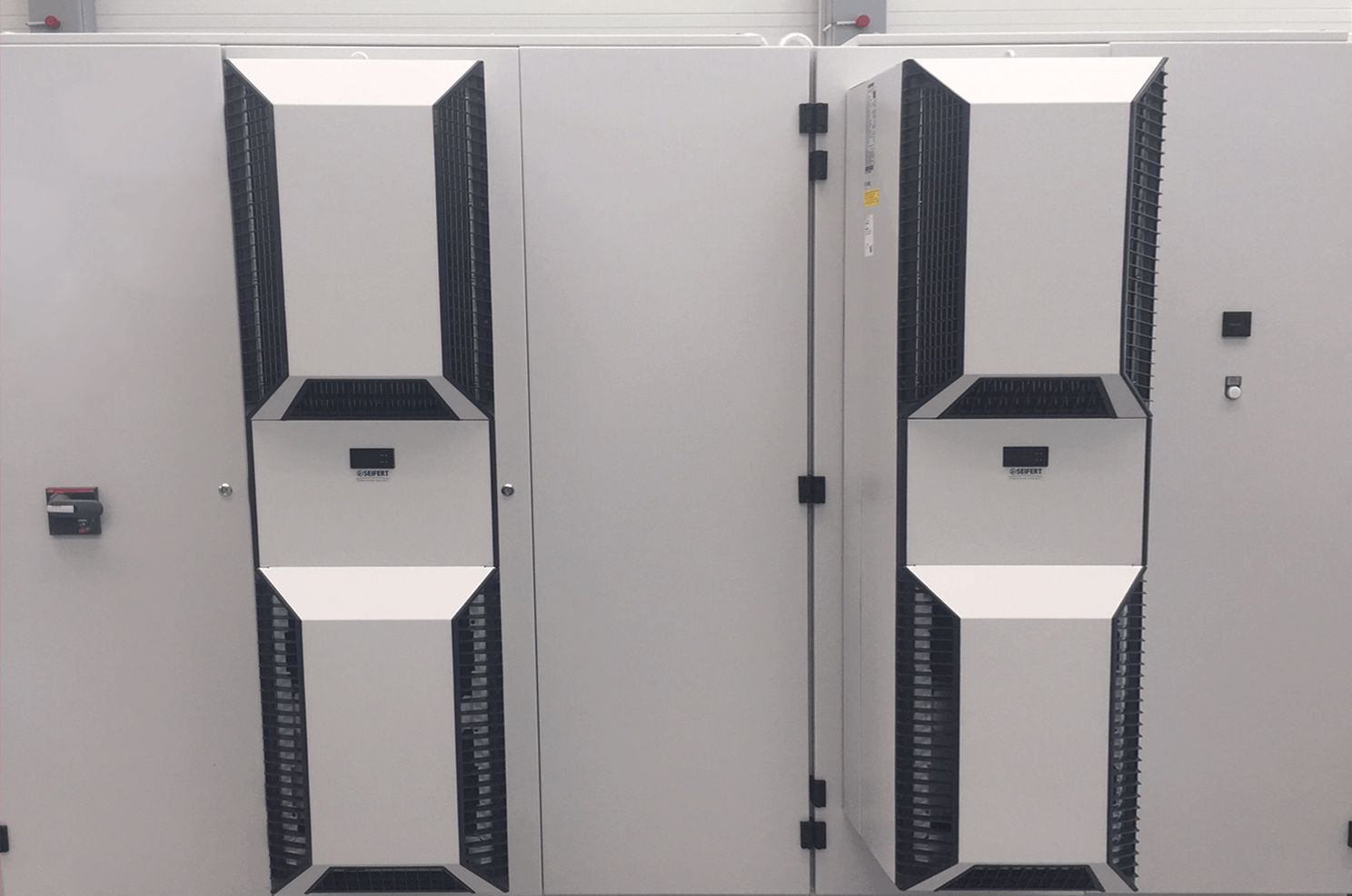
Enclosures cooling units work on the basis of a refrigeration circuit consisting of four main components; compressor, evaporator, condenser and expansion device.
The circuit is hermetically sealed and R134a refrigerant circulates inside it (R134a is chlorine free and has an Ozone Destruction Potential [ODP] of 0 and a Global Warming Potential [GWP] of 1430). The refrigerant R134a can be used without restrictions according to the current regulations.
The compressor compresses the refrigerant (thus taking it to high pressure and high temperature), and pushes it through the condenser, where it is cooled by ambient air thus passing from the gas to the liquid state. At the liquid state it then passes through the expansion device being a much lower pressure the refrigerant arrives to the evaporator where it absorbs the necessary heat to change from liquid to gas state. The gas is then drawn back into the compressor completing the cycle.
| 1 | Air inlet enclosure side | 6 | Air inlet ambient side | |||
| 2 | Radial fan enclosure side | 7 | Air inlet ambient side | |||
| 3 | Evaporator | 8 | Condenser | |||
| 4 | Air outlet enclsoure side | 9 | Air outlet ambient side | |||
| 5 | Compressor | 10 | Filter dryer | |||
| 11 | Expansion device |
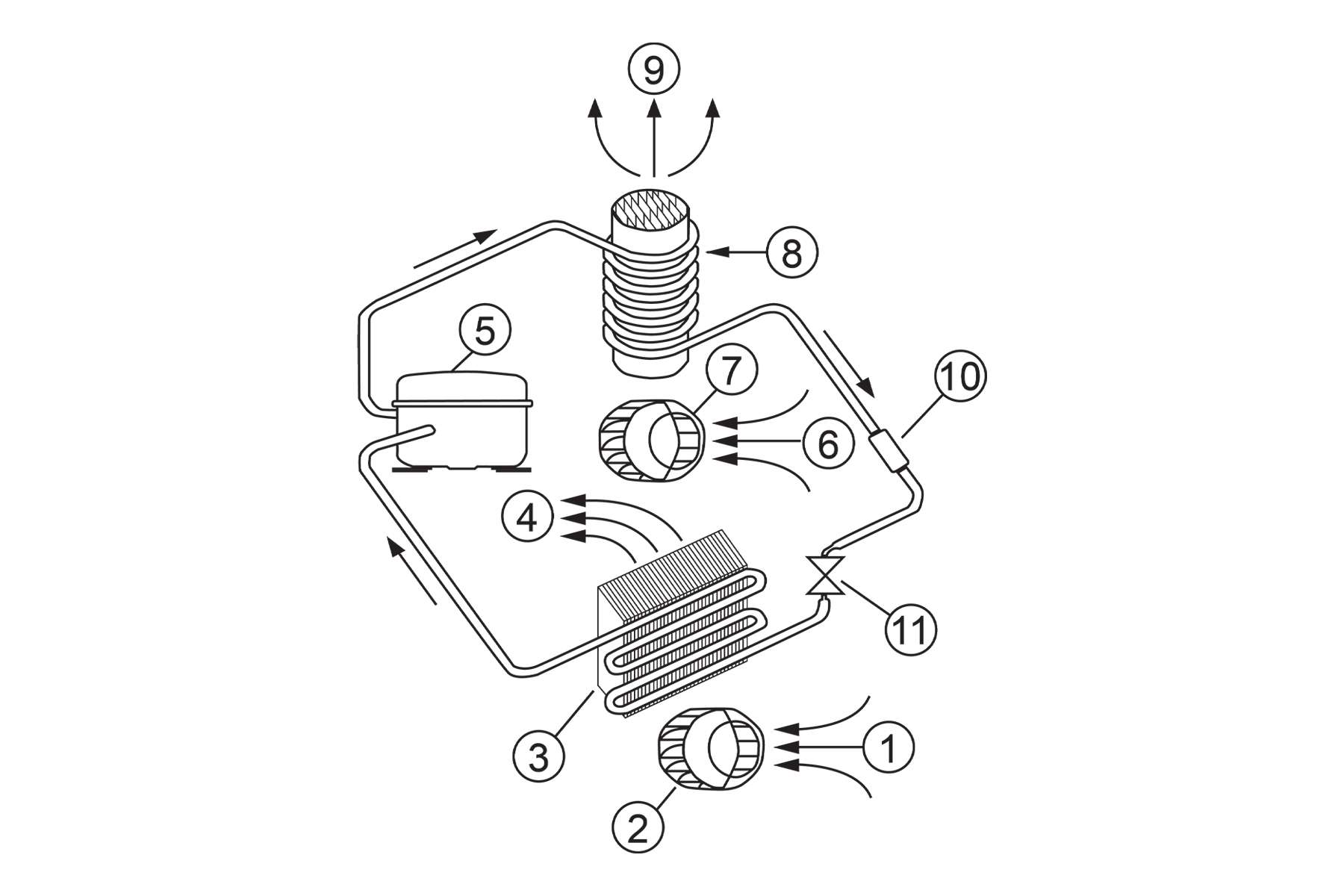
Cooling units are used when:
Product efficiency: Enclosure cooling units work like a heat pump and consequently consume electrical energy, which generates expenses. How efficiently a cooling device converts this energy into cooling performance is described by the cooling performance figure or Coefficient of Performance (COP).
The new generation of energy efficient cooling units have a COP of up to 2.5. This means that a cooling unit with a rated cooling power of 2,000 W (L35L35) will only consume 800 W power (2,000 / 2.5) power.
| 1 | Air inlet enclosure cold side |
| 2 | Air outlet enclosure cold side |
| 3 | Air outlet ambient warm side |
| 4 | Air inlet ambient warm side |
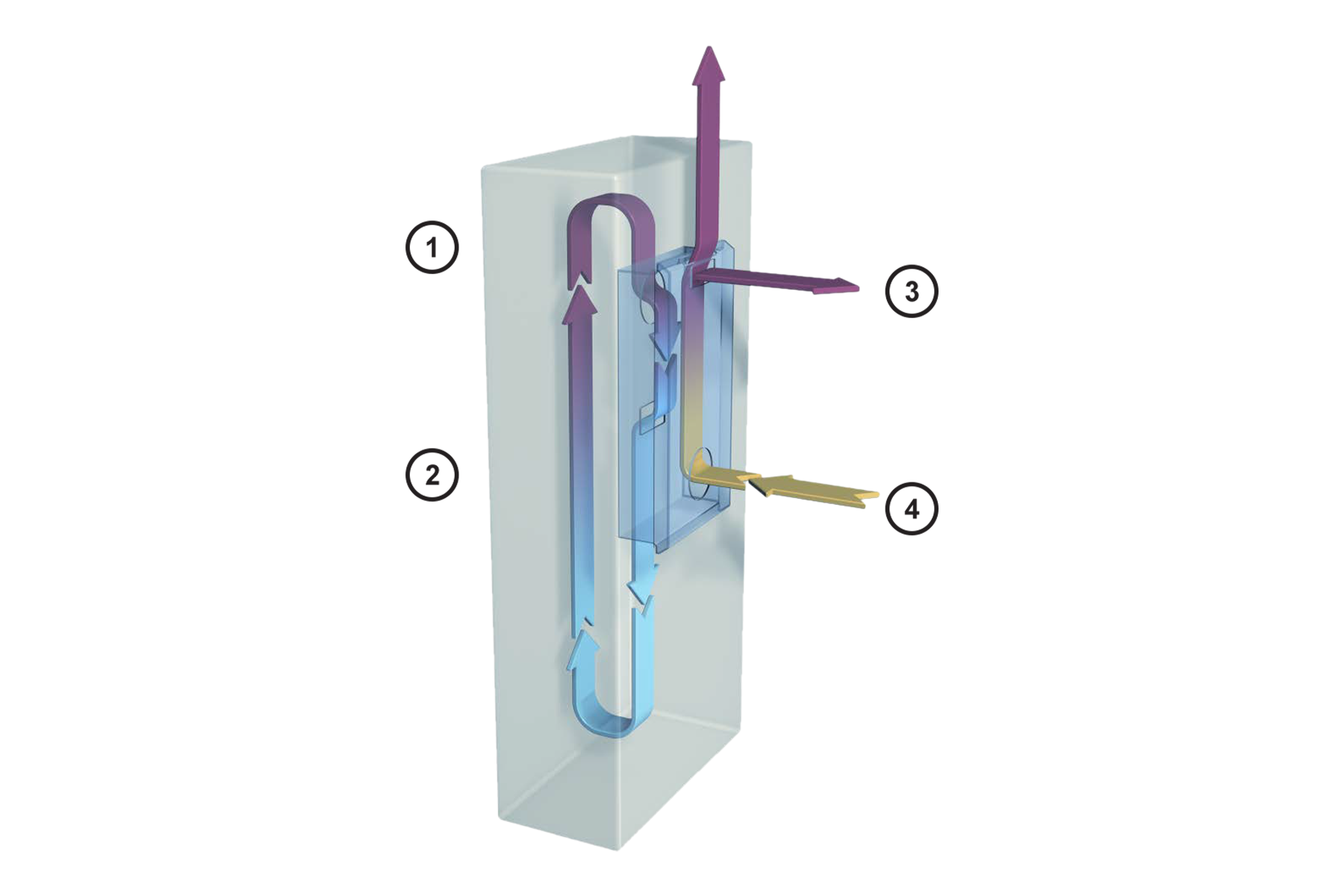
Air / air heat exchangers are used when cool ambient air is available but should not enter the enclosure because of contamination. Air / air heat exchangers are mainly used in outdoor applications.
Air / water exchangers are mainly used when a cold water supply is available, and high power losses in small areas need to be dissipated.
In both cases the enclosure temperature is higher than the ambient air or cooling water.

The cooling of liquids using chillers is one of the basic requirements for smooth and reliable operation in many industrial processes.
When choosing a chiller, the most important thing to consider is the right cooling medium. This can consist of oils, an antifrogen / water mixture or deionized water. Depending on the selection, the cooling capacity of the chiller must be adapted.
We offer chillers with cooling capacities from 500 W up to 200 kW, which we can adapt to the individual customer requirements.
Contact us, we will be pleased to advise you.
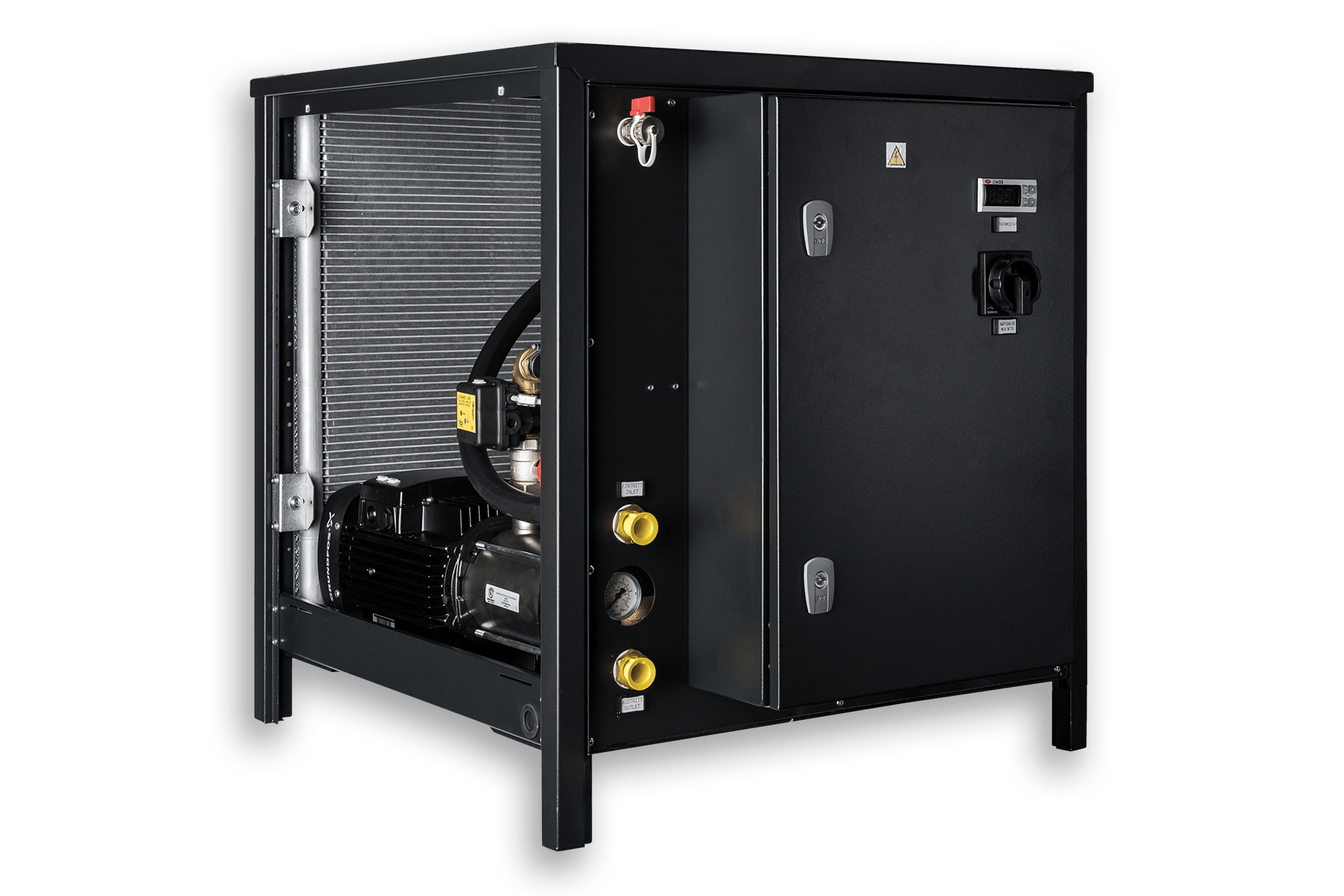
Peltier cooling units are based on the "Peltier" effect, which is derived from name of its inventor. When DC voltage is applied, Peltier elements generate a temperature difference which in combination with surface-enlarging heat sinks and forced ventilation, cause cooling inside the enclosure. The waste heat is dissipated into the environment via a separate ambient heat sink.
Peltier cooling units are mainly used to dissipate the heat of smaller power losses (30 - 800 W). They work without refrigerant, they have no compressor and no pressure circuit, for this reason they can be installed in almost any position. With a protection rating of IP 66 they can be used both for Indoor and Outdoor applications.
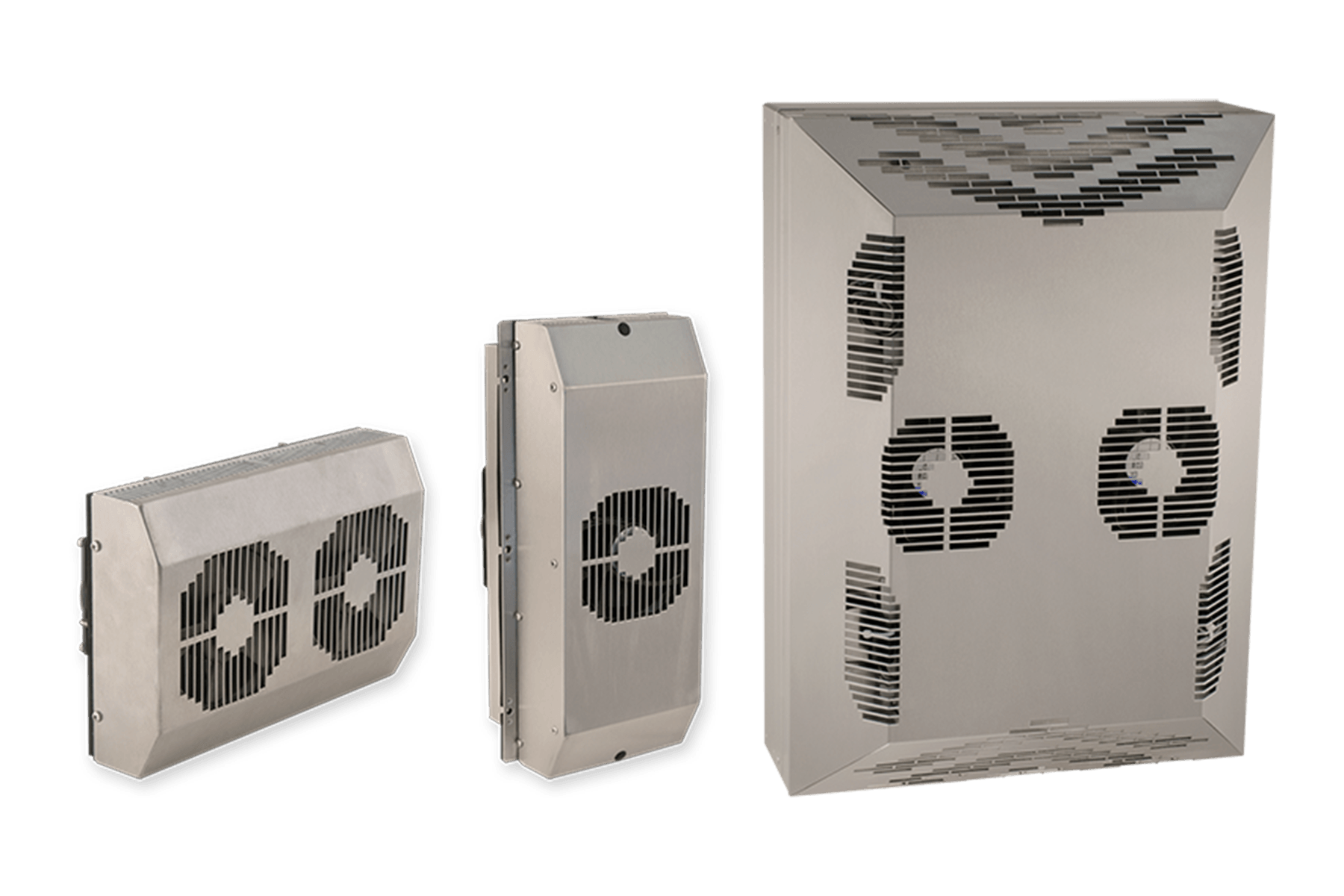
Filter fans and exhaust filters are used when the desired enclosure temperature may constantly be above the ambient temperature. Combined with thermostats, additional energy can be saved; the fan only runs when actually needed. In addition this results in less consumption of filter mats and less maintenance, extending the service life of the filter fans and improving process reliability.
Filter fans are best used to force cool ambient air into the enclosure (Figs. 2 and 3) thus building up a slight overpressure, ensuring that the ambient air only gets into the enclosure through the filter fan. The air forced in displaces the warm air inside the enclosure so that it can escape through the outlet filter. If, on the other hand, the air is sucked out of the enclosure (Fig. 1), it must be ensured that no unfiltered ambient air can penetrate through unsealed gaps or cable entries.
If you install a combination of filter fan and exhaust filter, the filter fan should always be placed in the lower third of the enclosure and the exhaust filter in the upper part of the enclosure, in order to prevent heat pockets.
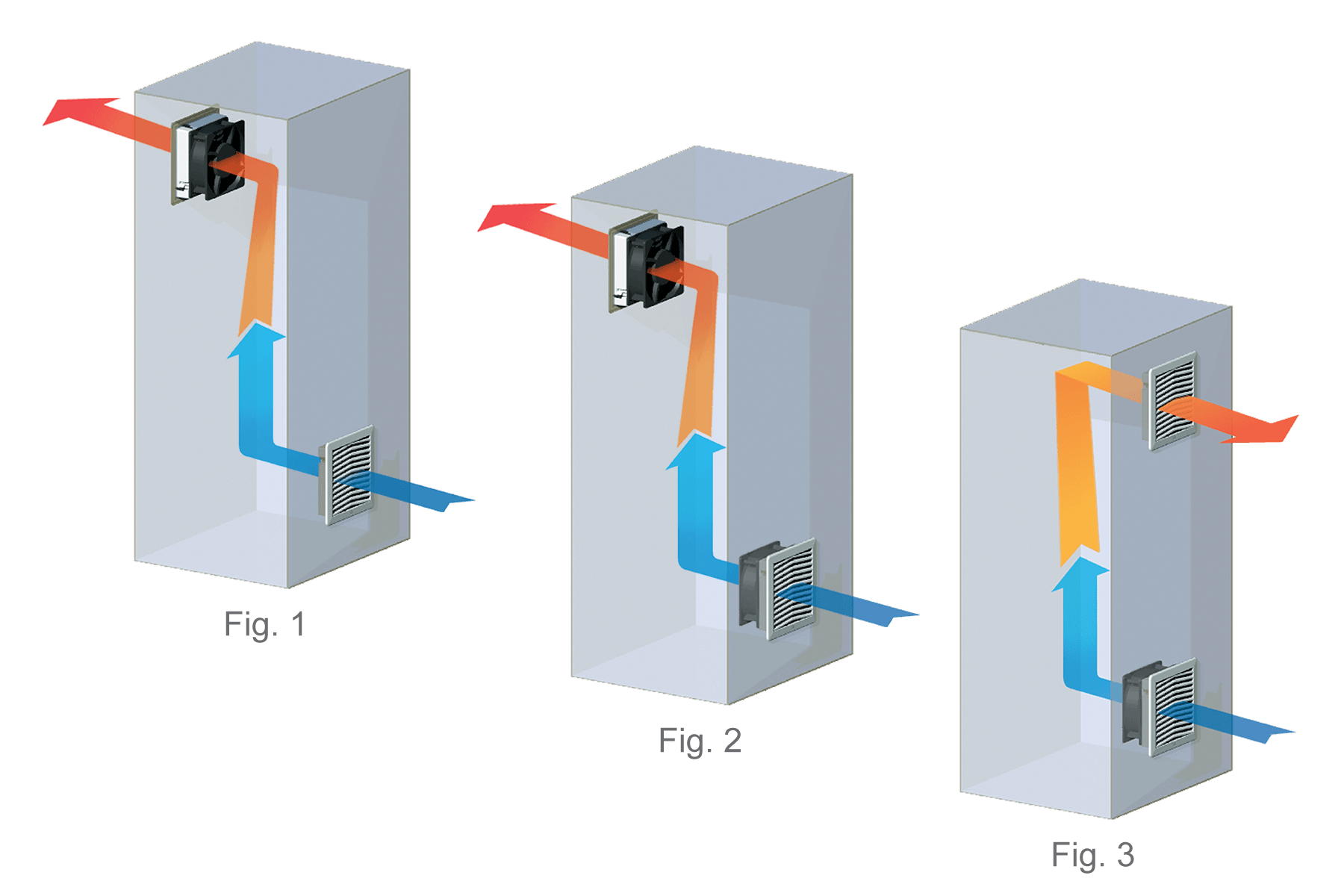
Enclosure heaters are an important segment of the Seifert accessories program and form part of our thermal management solutions. Temperature differences in enclosures, mostly in outdoor applications, often result in humidity and condensation which may cause function failures and corrosion.
The use of the appropriate heating unit for your enclosure will eliminate these problems. Fan heaters distribute the internal warm air equally throughout the enclosure. PTC heaters are compact in size, have a wider voltage range and the heating power adjusts in relation to the ambient temperature, resulting in a very good efficiency.
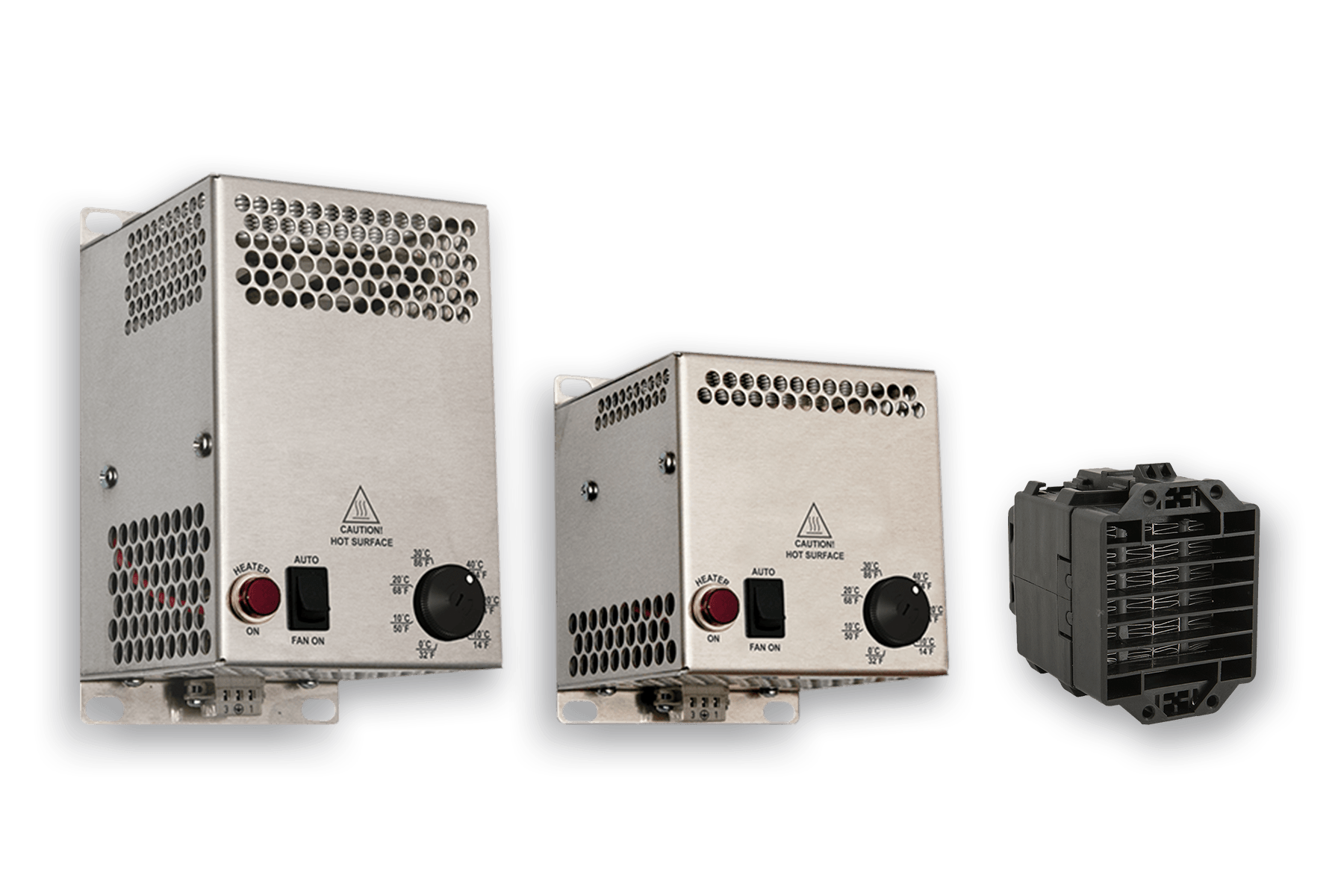
Thermostats and hygrostats ensure an optimal climate inside your enclosures or cabinets. Thermostats are available either as normally closed / NC (red disk) or as normally open NO (blue disk). NC thermostat are used for regulating heaters or for alarm signals when the enclosure temperature is falling below the preset minimum value. The contact opens when the temperature is rising.
NO thermostats are used for regulating filter fans, heat exchangers, and Peltier cooling units or for switching alarm signals when the preset temperature limit has been exceeded.
Hygrostats are used to limit the humidity inside enclosures. Internal sensors record the moisture content and the room temperature and calculate the optimal humidity for the measured temperature. If this exceeds the preset value, heaters can be switched on.
Plugable temperature and humidity sensors can additionally monitor the preset parameters to ensure that failures or malfunctioning of equipment can be avoided.
StripLite LED enclosure lights have been designed to meet the criteria of illuminating industrial enclosures and cabinets. They are available either with On / Off switch or with motion sensor. A wide voltage range and the possibility to connect multiple lights together, allow the universal use of these enclosure lights.
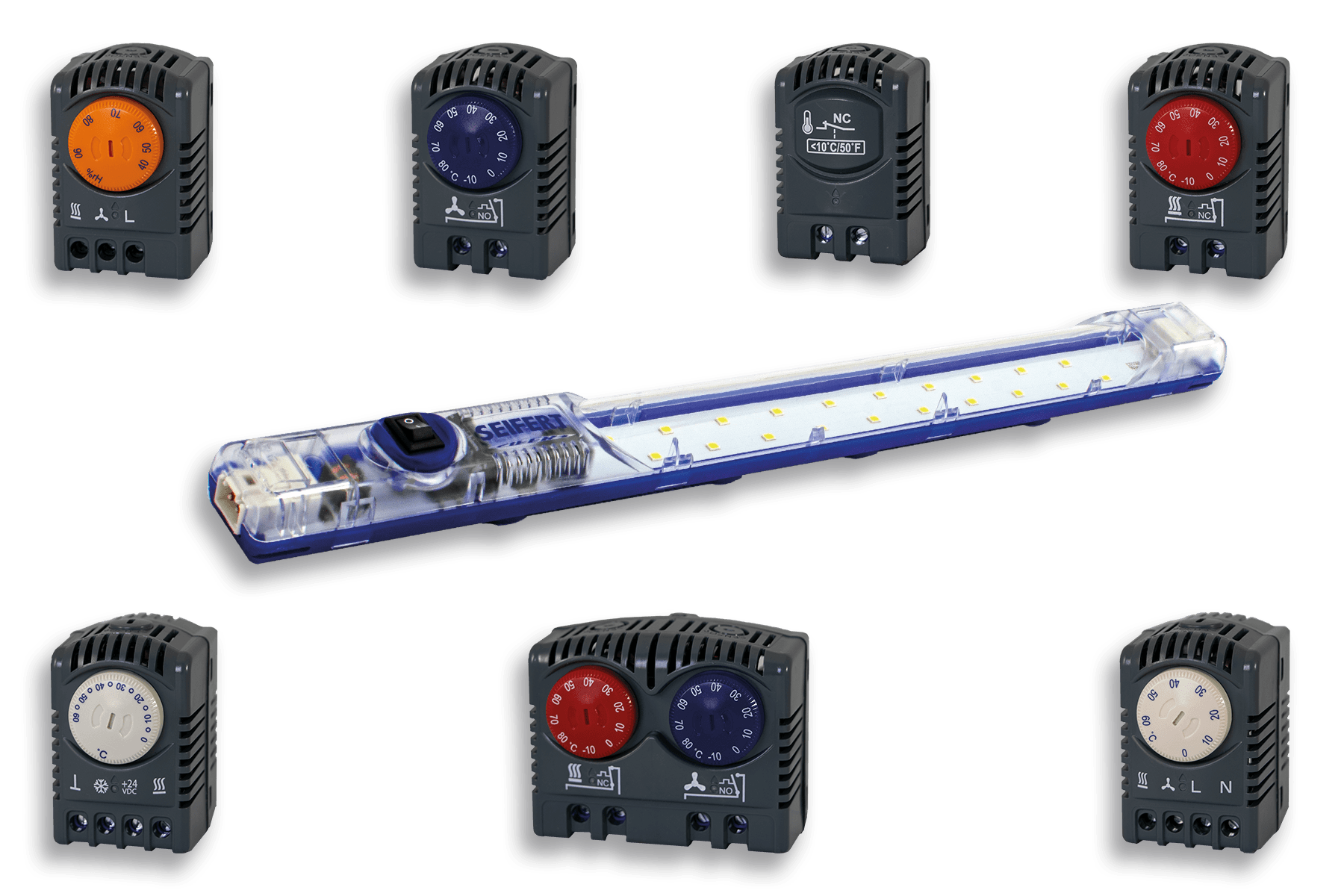
This includes cookies that are necessary for the operation of the site, as well as others that are used only for anonymous statistical purposes or for the display of external content. You can decide for yourself which categories you want to allow. Depending on your settings, not all functionalities of the site may be available. Details can be found in our Privacy Policy.
This includes cookies that are necessary for the operation of the site, as well as others that are used only for anonymous statistical purposes or for the display of external content. You can decide for yourself which categories you want to allow. Depending on your settings, not all functionalities of the site may be available. Details can be found in our Privacy Policy.
To display this item, consent to the use of cookies in the following category is necessary: {category}.
